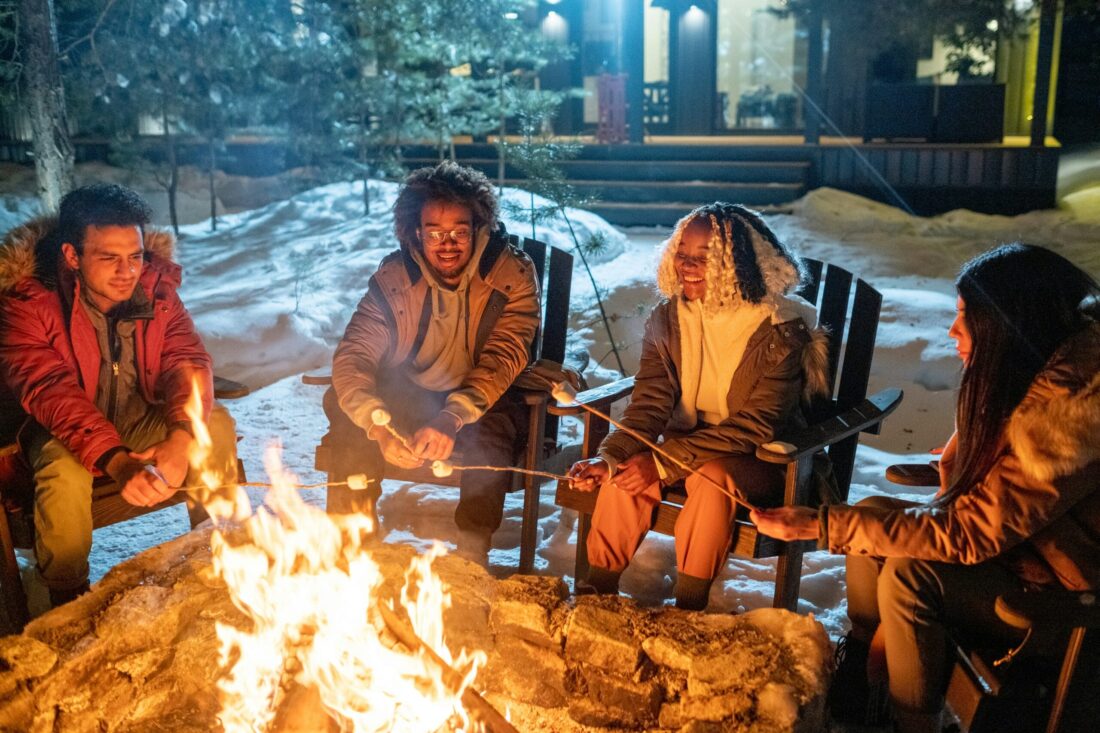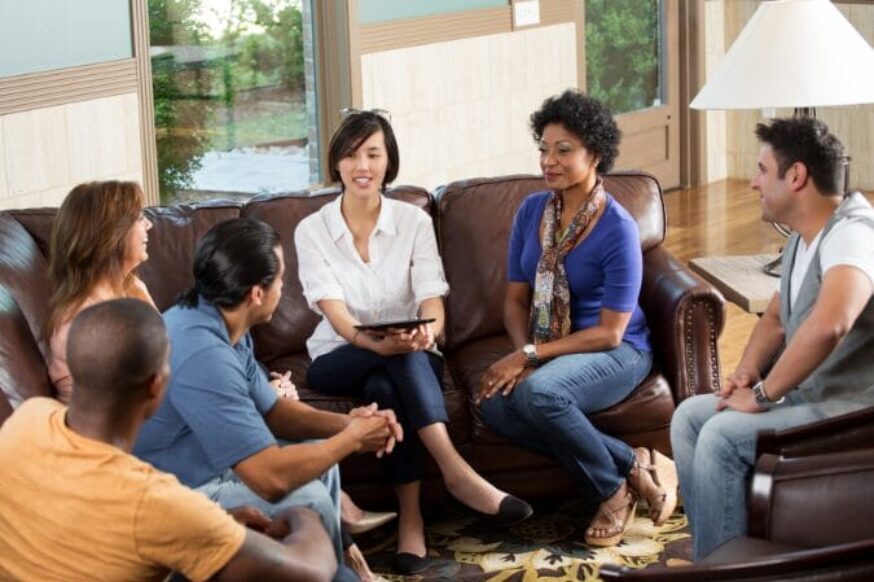The Stories and Systems Learning Circle is a learning space hosted by the Centre for Public Impact for people exploring how stories shape systems and change. Across four sessions, participants shared tools, practices, and reflections on how storytelling can deepen understanding, build relationships, and unlock new possibilities for change.
This final session focused on storylistening and on how we can create the conditions to truly hear community stories and hold them with care.
The quiet power of listening
Storytelling is the connective tissue of systems. It can bridge differences across communities, illuminate hidden dynamics and reveal patterns that data alone fails to capture. We often ask people to tell their stories. Yet, how often do we ask ourselves if we’ve built the trust, humility, and patience to listen to them with intention and care?
Storylistening, the deliberate, attentive act of receiving stories, can turn stories into transformative experiences through activating empathy, centring the importance of trust and relationships and affirming our own individual experiences. In systems change work, we often focus on outcomes, metrics, and strategy. But we underestimate a quieter, radical force: the act of listening and the power of being heard. As Sarah Dillon and Claire Craig write in their work on storylistening:
“Stories matter, but particularly in the context of the use of research-based evidence, policymakers and experts rarely ask how, or why, or what to do as a result. Some stories are dismissed as mere entertainment or fiction, and some have too much confidence placed in them: there is a tendency to storyimbibe and to get drunk on charismatic stories, whether they are based on computational models or a novel.
“Storylistening, as a conscious and reflective act of creating narrative evidence, is rare. Perhaps because stories are ubiquitous, there’s rarely serious thought about how best to listen to them.”
Creating the conditions for storylistening
To explore what storylistening looks like in practice, we invited Ben Knight, co-founder of A Curious Tractor and the Empathy Ledger, and Kristy Bloomfield from Oonchiumpa in Mpwarte (Alice Springs). Together, they shared how their collaboration grew from a place of mutual respect and trust, and how they’ve worked to listen to and hold community stories with care.
Ben’s Empathy Ledger is a revolutionary digital platform that connects storytellers with audiences, organisations, and decision-makers. Kristy is a Central Arrernte, Eastern Arrernte and Alyawarra woman and Traditional Owner of Mparntwe (Alice Springs). She leads work at Oonchiumpa, a cultural brokerage organisation that bridges Indigenous knowledge systems with contemporary justice approaches, guiding young people to navigate two worlds with strength and cultural identity.
Creating trust to hold community stories
Ben and Kristy began working together in Central Australia, where Mpwarte was often demonised in the media for youth crime. “The stories portrayed Alice Springs as being a dangerous town and Aboriginal people in a horrible light,” recalls Kristy. A local judge introduced Kristy to Ben’s work at the Empathy Ledger. The pair agreed to collaborate to elevate the great work being done by local organisations with First Nations young people in Mpwarte.
To build shared trust, Kristy and her fellow traditional owner, Tanya, took Ben on listening tours to understand first-hand how policies have affected people’s day-to-day lives. Ben consistently showed up, shared what he was learning with the community, and opened up opportunities he had access to, building a relationship grounded in reciprocity and trust.
“A lot of people promise us we can do this for you, or we can do that for you, but it’s in one ear and out the other”, Kristy reflected. Ben’s reliability, consistency and transparency helped establish the foundations of trust needed for the community to share their stories with agency. Ben responded:
“For me, the essence of capturing anything in community is: Can I give it to that person? Can they own it? Can they understand where it is going to get used? I’m keen to understand how the things I capture can have deeper impact for the person and that they maintain ownership of the story.”
Storylistening as a practice of systems change
Their work also shows how storylistening can reshape institutions themselves. Helping them move from extractive models of knowledge-gathering to practices rooted in partnership and respect.
A part of Oochiumpa’s work has been to collaborate with the Australian National University (ANU) and the North Australia Aboriginal Justice Agency to develop a program called Legal Education for True Justice: Indigenous Perspectives and Deep Listening on Country.
One of the key design features of the course is that the university positions itself as a listening institution and is not responsible for the course content. Instead, it shares power, and the content is set by Kristy, Tanya, and other Indigenous speakers, based on their experience and perspectives on law and justice, drawn from decades of work in Mpwarte.
The purpose of the course is to enable law students to develop their deep listening capacity and to shape their views of systems as they move through their careers. The course is now being shared with judges and senior public servants. “It’s about having empathy with our young people and their lives,” says Kristy.
In CPI’s report on Storytelling for Systems Change: Listening to Understand, we write about the transformative power of listening to understand:
“Perhaps we can best define what we mean by ‘listening to understand’ by reference to what it is not. As one senior public servant explained, ‘In government, we tend to listen to respond.’ Listening to understand is not this. Listening to understand is grounded in humility, empathy, and heart. It means listening with curiosity and suspending our habits of judgement. Listening to understand is a generative practice which recognises that the process of listening is just as important as the insights that emerge.”
Practices for cultivating brave spaces
As we reflected on what it means to hold stories, we asked Ben and Kristy for parting advice on how to create brave spaces for storytelling within communities.
Ben offered that finding ways to spend meaningful time in a place is essential to building relationships with the right knowledge holders. “The most connected people with the best stories [in communities] are often the ones you can’t find online”. In addition, building ongoing relationships with communities has been key to the Empathy Ledger’s work. Kristy added that reciprocity and partnership are vital: “We invite people to come on the journey with us. We want to continue partnerships of mutual growth and learning”.
The story circle
To bring these ideas to life, we ended the session by practising what we had learned — gathering in a story circle to listen deeply to one another. Members of each discussion group shared a story crafted throughout the program. We used the following prompts, adapted from The Small Giants’ Academy’s Storytelling for Change course, to guide how we might receive stories meaningfully:
- Cultivate an awareness of small details – particularly, what lights you up.
- Slow down and use all your senses to notice.
- Follow what is stirring you and listen to how it links to other memories.
- When an idea comes for a story, notice the part of you that is excited and curious by it.
- Let the resolution hang or lightly sparkle – give yourself space to grow beyond it.
To give you a taste of the stories that were shared, we’ve included The Campfire below:

The campfire
Stories are seeds, fire, wind, and waves. Stories spread, grow and engage groups humming together as one. Stories have always been and will always be. They have lives of their own that cannot be controlled once they are ushered into being… What stories do we tell about ourselves in this moment? What is a story of radical hope in these turbulent times? We’ll tell you a story now, our story of hope. Let us begin.
Once upon a time, all of humanity was sitting around a campfire. In the warmth of the fire, humanity felt seen and understood, encouraged to act and share. People reached into their baskets and started sharing their stories around the fire. They shared stories of their struggles, of their successes, of their hopes and their dreams. But as they shared, they heard a voice coming from outside the warmth, “Your stories are different, your stories separate you, therefore some of your stories must not be true, and if they’re not true then they must not be valuable.”
Slowly, one by one, the people hid their stories in their baskets so that they couldn’t be judged. Instead, they looked outside of the campfire to understand which stories they should keep and which they should leave behind. As they did this, the people turned away from each other and moved away from the warmth of the fire.
Now hidden from the light of the campfire, there was a trickster in a tree watching humanity. He whispered to each person as they turned away: “Put aside your childish stories. They don’t make any sense. They’re not true. Ask the experts. What do the experts say, what do their numbers say?”
One by one, the people started doubting themselves and their connection to each other. “What are we doing here?” they wondered. “What is the point?”
But all along, the fire was listening, and the fire understood what was happening. You see, the fire needed the people to add kindling and tend its coals to stay alive. And the people needed the fire’s light to see one another, recognise one another, and stay warm and connected. The fire needed people to gather around and tell stories, and the people lived and learned while telling stories in the fire’s light.
So in an attempt to regroup the collective, the fire used all of its strength to grow brighter and brighter. The fire asked the wind to send out the fire’s sparks to draw people in and connect people to each other. A tiny child standing around the fire looked up at the sparks in amazement. The little girl stepped forward and asked for humanity’s attention, “Wow!” She said, “Look at those beautiful sparks flying in the night sky!”
And as the fire grew warmer, the people drew closer together. And naturally, the conversation started again, and many stories were shared. With each of their stories, people added new kindling to the fire, and more sparks rose and swirled. One of the sparks from the fire flew close to the trickster in his tree. He reached for the brilliant spark, but the spark escaped his grasp. The spark was so beautiful and warm that the trickster followed it, attempting to grab hold, and as he followed the spark, for the first time in many years, the trickster came down from his tree.
Suddenly, the trickster realised that he was standing amidst humanity, shoulder to shoulder around the campfire, and he felt warm. In the light, he looked around at humanity, shy at first, wanting to belong to the group but not knowing how to belong.
The little girl looked across the campfire and saw the trickster standing confused. She pushed through the crowd and moved closer to the trickster. She looked into his eyes, smiled, and asked him, “What’s your story?”
Now warm from the fire and encouraged by a child’s smile, the trickster remembered that he too had a story to tell, and so he began, “Once upon a time…”
What’s next
This is the last blog of this series. In partnership with Dusseldorp Forum, we will soon be collating all our Stories and Systems resources in a website. Stay tuned for more!



